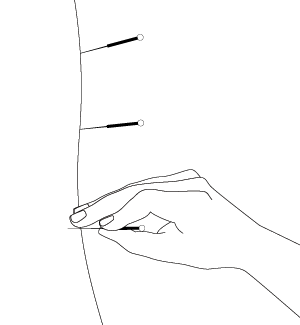The insertion of very small needles in specific points of the body — known as acupuncture — is known to relieve pain and treat health issues.
Most people don’t like being poked and prodded with needles. Still, the insertion of very small needles in specific points of the body — known as acupuncture — is growing in popularity throughout western parts of the world to help relieve pain and treat health issues.
According to Johns Hopkins Medicine, acupuncture is part of the
ancient practice of Traditional Chinese medicine (TCM)
that has evolved over thousands of years to
prevent, diagnose, and treat disease.
The belief is that your body’s vital energy (called qi) flows along specific meridian channels and lends itself to spiritual, emotional, and physical health when balanced. When unbalanced, it can lead to health issues, but one approach to restoring the balance and flow is acupuncture. Acupuncturists believe 2,000+ acupuncture points on the body are linked through the various meridians. The actual practice of acupuncture includes placing thin needles into the skin on certain points of a meridian. These are then activated by the provider’s hands or through electrical stimulation.
In Western practices, acupuncture points are seen as places to stimulate nerves, muscles, and connective tissue and stimulate pain management naturally in the body.
The needles used in acupuncture are extremely thin, causing little pain to the recipient. Instead, many feel relaxed or energized through the practice of acupuncture. Other forms of stimulation may also be used in the sites, including heat, pressure, friction, and suction.
Professionals use acupuncture to relieve discomfort and treat conditions like:
- Chemotherapy-induced and postoperative nausea and vomiting
- Dental pain
- Fibromyalgia
- Headaches (tension and migraines)
- Labor pain
- Lower back pain
- Neck pain
- Osteoarthritis
- Menstrual cramps
- Respiratory disorders
- Tennis elbow

Other studies show acupuncture can also support treatment for addiction, asthma, digestive issues, emotional conditions (including anxiety, depression, insomnia, nervousness), and sinusitis.
The risks of acupuncture are low. They include soreness or minor bruising and bleeding at the needle insertion sites. The widespread adoption of single-use needles helps mitigate the risk of infection.
According to the National Center for Complementary and Integrative Health, some insurance policies cover acupuncture while others do not, and coverage can be limited based on what is being treated.
Sources:
- https://www.mayoclinic.org/tests-procedures/acupuncture/about/pac-20392763
- https://www.healthline.com/health/acupuncture-how-does-it-work-scientifically
- https://my.clevelandclinic.org/health/treatments/4767-acupuncture
- https://www.nccih.nih.gov/health/acupuncture-what-you-need-to-know
- https://www.hopkinsmedicine.org/health/wellness-and-prevention/acupuncture
